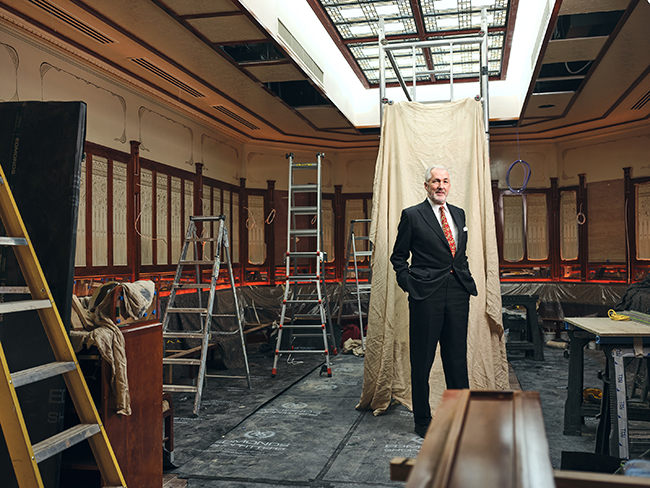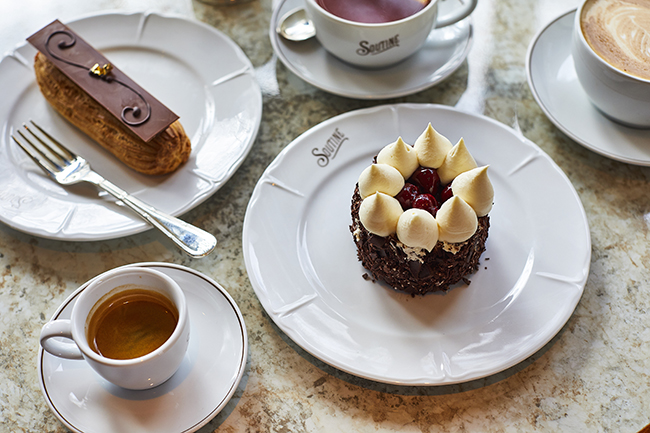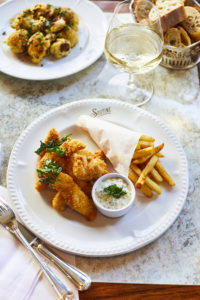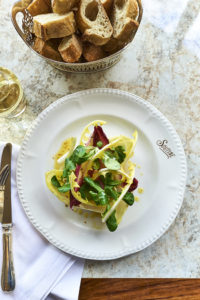A fine art: Jeremy King on St John's Wood restaurant Soutine
Jeremy King recounts the tale behind his new venture Soutine in St John's Wood, incorporating art, literature and history to create a restaurant with a truly compelling narrative. Emma Lake reports
"There is always the love of a story," Jeremy King says as we sit in the office of his now nine-strong restaurant group, surrounded by accolades amassed over a hospitality career spanning some four decades.
A journey through the Corbin & King portfolio would include stops at traditional Parisian brasseries and all-day boulevard cafés, as well as the Viennese eateries of the early 20th century and, of course, the grand cafés that inspired the Wolseley in Londonâs Piccadilly.
Neighbourhood restaurant Soutine â" taking its name from French-Russian expressionist artist Chaïm Soutine â" is the latest addition, opening in the north London village of St Johnâs Wood and drawing inspiration from the artistic heritage of the area, as well as nearby Lordâs cricket ground.
King says he is guided by âintuition and instinctâ when developing a restaurant, with the building and its environment commanding the direction. As with Colbert in Chelsea and Fischerâs in Marylebone, Soutine has been created as a distinct standalone neighbourhood restaurant, inspired by Kingâs research and visits to the area.
He explains: âThere are a lot of contributing factors to the character of St Johnâs Wood, and the most noted is the number of artists that lived in the area. When I discovered there had been a St Johnâs Wood art school not far away, which had been formed by, among others, ElÃseo Abelardo Alvarez Calderón, who had come from Paris, the gem of an idea developed.
âWe liked the art school because, unlike anywhere else in the 19th century, they encouraged women to become artists. Every- where you go in St Johnâs Wood, you find blue plaques as a testimony to the artists. Furthermore, we discovered that when the art school closed it became the Anglo-French Art Centre. Suddenly, it seemed that a French restaurant was appropriate.
âThe other major influence in the area is that of Lordâs, so when you enter, youâll find an element of both worlds, although most predominantly the artistic. The food will hark back to a period for which Soutine was known, which was the School of Paris 1910-1930, where he joined Amedeo Modigliani, Marc Chagall and many other immigrant artists on the Paris stage. They spent their time in boulevard cafés and grand cafés; the very nature of Soutine is derived from that, and I like to think that they might have felt comfortable sitting in the present-day Soutine.â
The restaurantâs menu will be predominantly French-inspired â" with some Russian flourishes to pay homage to its artist namesake. Its design draws inspiration from the Arts and Crafts movement, which was flourishing across Europe at the time. Decorative panelling lines the dining room, and intricate engravings of grapevines weave their way up the imposing cherry-wood bar that greets diners as they enter. The artistic and environmental influences come together in a mural by artist Michael May, which winds its way up the restaurantâs stairwell, depicting early 1900 street scenes as well as a cricket match being played at nearby Lordâs.
Story time
Corbin & Kingâs restaurants have long been lauded for their timeless interiors and the environments they help to create.
âIâm always a little intrigued how quickly people adopt our stories,â King says. âNot all the restaurants have them because they stand up by themselves; it tends to be the more local restaurants. Thereâs a narrative interwoven with fact â" that, for me, is exciting and it gives it a life.â
Diners have yet to sit in the seats in which King hopes Chaim Soutine and his contemporaries would have felt comfortable as they discussed the shattering of the shackles of classicism and the emergence of new artistic movements. When they do, many may not choose to read into the carefully chosen details of their surroundings, but the restaurateur hopes they share the artistsâ feeling that these public spaces provide a canvas for their own experiences.
He says: âRestaurants are the heart-blood of society and, over the years, most artistic, literary, revolutionary and political movements have come out of restaurants, cafés, coffee shops and so on. You go to a restaurant to meet a friend, have a reunion with family, meet a spouse, for an interview, to fire someone, to seduce, to divorce. People use restaurants in all sorts of ways and a great restaurant allows all that to happen.â
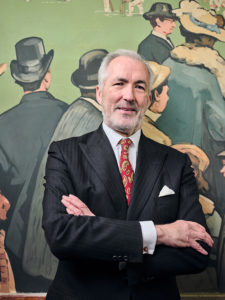
Inclusivity has always been at the heart of King and Corbinâs mantra, through a resolution to serve people what they want to eat, rather than what the chef wants to serve them, and âto treat people as we would like to be treatedâ.
King says that allowing this to happen and enticing people from all walks of life through the door help to make a great environment. He explains: âPeople ask me what makes a successful restaurant and they expect me to talk about location, chef, interior â" all that sort of thing. Yes, theyâre all factors, but the top two things are heart and soul. What I think we strive for most is integrity and authenticity. We teach that you never look at someone coming through the door as a potential source of income; you look at them as an opportunity to give someone a great time.
âChris and I always worked on the basis that we must give people the opportunity to spend, but we must not make it mandatory, because a lot of the most interesting people who come to restaurants are the least affluent and itâs a balance. For a restaurant to be interesting, people need to feel welcome, even if theyâre not spending much money.â
When it comes to menus and service, King is a traditionalist. When he and Corbin entered the business, a survey found that people would dine in a restaurant less than once a year. He says that while the British have come on a long way, they do not yet use restaurants like their European counterparts â" and service should reflect this.
He says: âOnce a manager watched me going around a room and said, âI donât understand it, you know a lot of these people really well and you hardly said helloâ. I said, yes, they donât want me to. Theyâre in the middle of talking. They want me to know they are there, to acknowledge them so they feel reassured and that theyâre going to be looked after. Where restaurateurs go wrong is they start regaling their customers with tales; Iâve had many a meal ruined by a restaurateur sitting down at my table. We have to respect the customer at every level; never take them for granted. Always be acutely aware that unless weâre careful, they may become jaded.
Similarly, King is not one for fads or trends. A debate about giving weight to how âInstagrammableâ a dish is saw him declare that Corbin & King must ânever design food to get social media, because itâs gimmickyâ. A week later The Sunday Times restaurant critic Marina OâLoughlin tweeted a picture of the Wolseleyâs omlette Arnold Bennett, described by King as the âleast attractive dishâ. Alongside it she wrote âclassic simplicityâ. For King it was further confirmation.
All this is not to say that he is standing still or eschewing progress. He regularly quotes Giuseppe Tomasi di Lampedusaâs The Leopard, saying âfor things to remain the same, everything must changeâ. He makes the comparison to the Coca-Cola bottle, which looks classical despite its shape having completely changed over the years. He adds: âThe only way you can stay ahead is to constantly improve. Complacency and arrogance are the great enemies of the restaurant business.â
As well as constantly improving, Corbin & King is also continuing to expand. Planning permission is being sought for a ârather unusualâ site in Soho, and King says the group is âseriously lookingâ for its next hotel site after the leasehold of the Beaumont was sold last year [see panel].
Last year the group opened Café Wolseley in Oxfordshireâs tourist hotspot Bicester Village. Originally Corbin & King had planned a new Italian-inspired concept for a site in the village, but another unit became available that King felt was more suited to a grand café.
He says: âIt was an experiment, but what I loved about it was that it opened our mind to the possibility that we could go to other places in the world. One of the things that has stopped the Wolseley going elsewhere is the lack of suitable buildings, whether itâs New York or Hong Kong or wherever. Weâve looked, but not found the right place or been gazumped or beaten out by massive costs.
âThe important thing is not to compromise; weâve had investors who canât understand why we havenât opened more Colberts â" they donât understand all the things that make it successful. Iâd do a chain if I could find the right thing; Danny Meyerâs restaurants were all different, and then he achieved the ultimate roll-out with Shake Shack after opening a coffee shop and burger stand in Madison Park. I would do that, if we found the right thing.â
Itâs longevity that holds value for King and he will continue to create stories that can be told for decades to come with his eye for detail and love for art, literature, architecture, history and music informing their narratives.
He explains: âWhat people donât realise is restaurants give an opportunity for so much more. Too often the British think that being a restaurateur is purely about taking orders, cooking food, delivering food, collecting plates and giving a bill. Thatâs boring. Itâs what is beyond that that makes it exciting for me.â
Head chef Maciej Banas (formerly of Fisherâs)
Restaurant manager Daniel Craig (formerly of Colbert and the Wolseley)
Covers Restaurant: 107; exterior: 15; street café: 24
From the menu Confit de canard with braised puy lentils (£14.75); coq au Riesling (for one, £15.25; for two £29); coupe Lucian â" hazelnut, almond and pistachio ice-cream, whipped cream and butterscotch sauce (£6.75); gateau Napoleon (£6.50); tarte fine aux pommes (£5.75)
Opening date Week commencing 29 April
Chaim Soutine
Chaim Soutine (1893-1943) was a French-Russian expressionist artist who moved to Paris in the early 1910s.
He was a prominent member of the School of Paris, a community of artists who would work around the cafés, salons and workspaces of Montparnasse.
Soutine painted many portraits of hospitality workers, including waiters and pastry chefs, as well as images of food, such as game, poultry and beef.
One enduring story claims the passionate artist prompted the wrath of neighbours who complained about the smell emanating from an animal carcass Soutine had been painting. When police officers arrived, it is said that he argued for the importance of art over hygiene before agreeing to use formaldehyde to dampen the odour.
He died in Paris in 1943.
Corbin & King
Chris Corbin and Jeremy King have acquired legendary status as both restaurateurs and hoteliers and were inducted into the British Travel & Hospitality Hall of Fame in 2015.
Itâs a long way to have come since 27-year-old King, at the time the maître dâ at the US-style Joe Allen restaurant, and 29-year-old Corbin, then manager of the French-influenced Langanâs Brasserie in London, were poached by designer Joseph Ettedgui to join his takeÂover of the faded Le Caprice in 1981.
Ettedgui left, and within a few years Le Caprice was the toast of London. The Ivy followed in 1990 and seafood restaurant J Sheekey in 1997.
The pair sold out in 1998 and remained as Caprice Holdings directors until 2002 before returning in style in 2003 with the Wolseley, a grand café on Londonâs Piccadilly serving more than 1,000 covers a day.
In the intervening years, the pair have added Colbert, Brasserie Zédel, the Delauney, Fischerâs and Bellanger, all in London and inspired by the grand cafés of central Europe. Last year Café Wolseley joined the group in Bicester Village, Oxfordshire.
Their foray into hotelkeeping with the Beaumont in Mayfair was praised by critics and guests alike, and the hotel was the winner of the Hotel of the Year â" Independent Catey award in 2017. However, Grosvenor sold the leasehold to the Barclay family, owner of the Ritz London last year.
But King has said the group is âseriously lookingâ to re-enter the hotel market. This time it will have the support of investor Thai-based Minor Hotels, which operates more than 150 sites globally and paid £58m for a stake in Corbin & King in 2017.
Corbin & King in advanced discussions to open Soho restaurant >>
Corbin & King eyeing a return to hotel market >>




